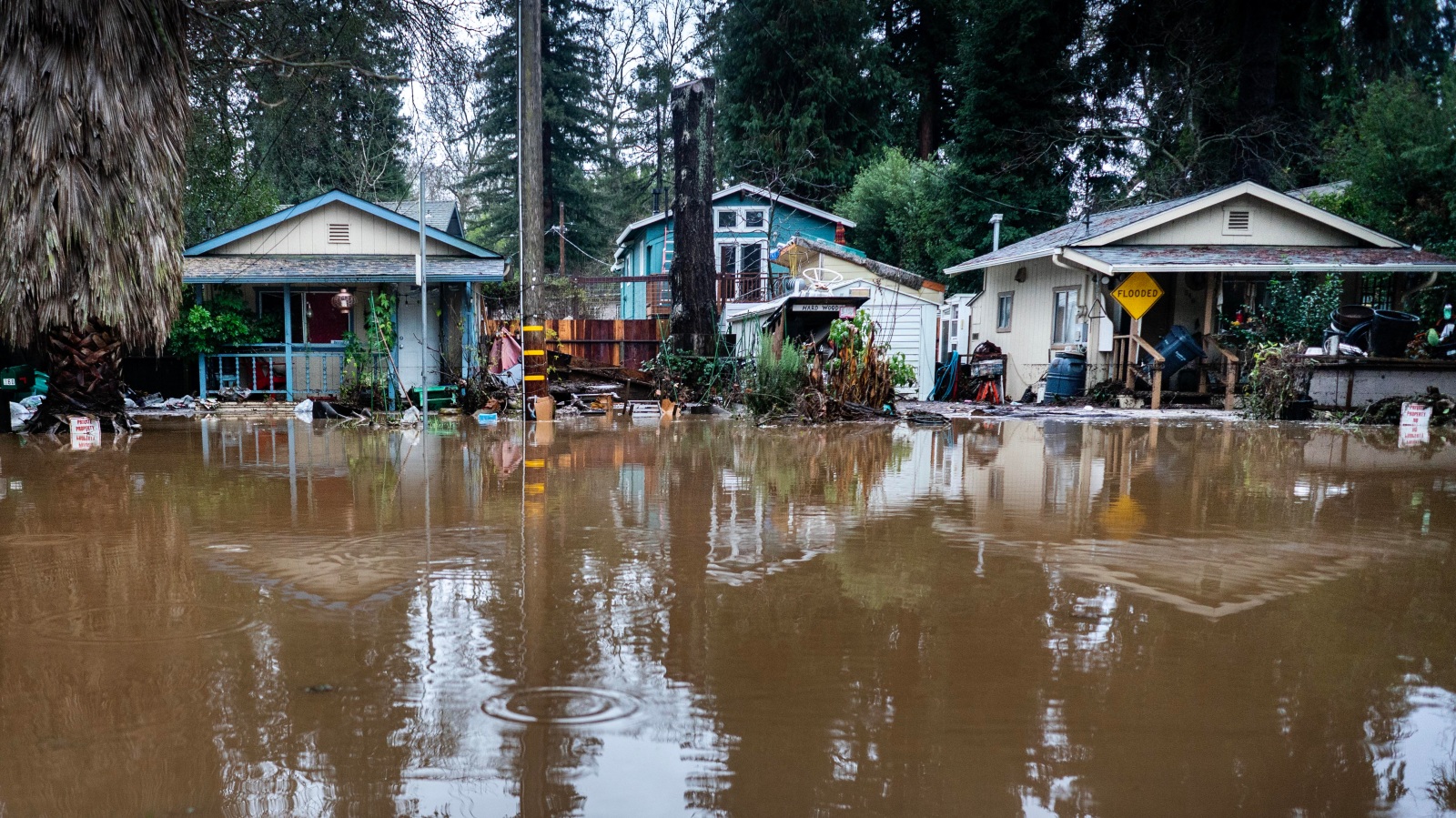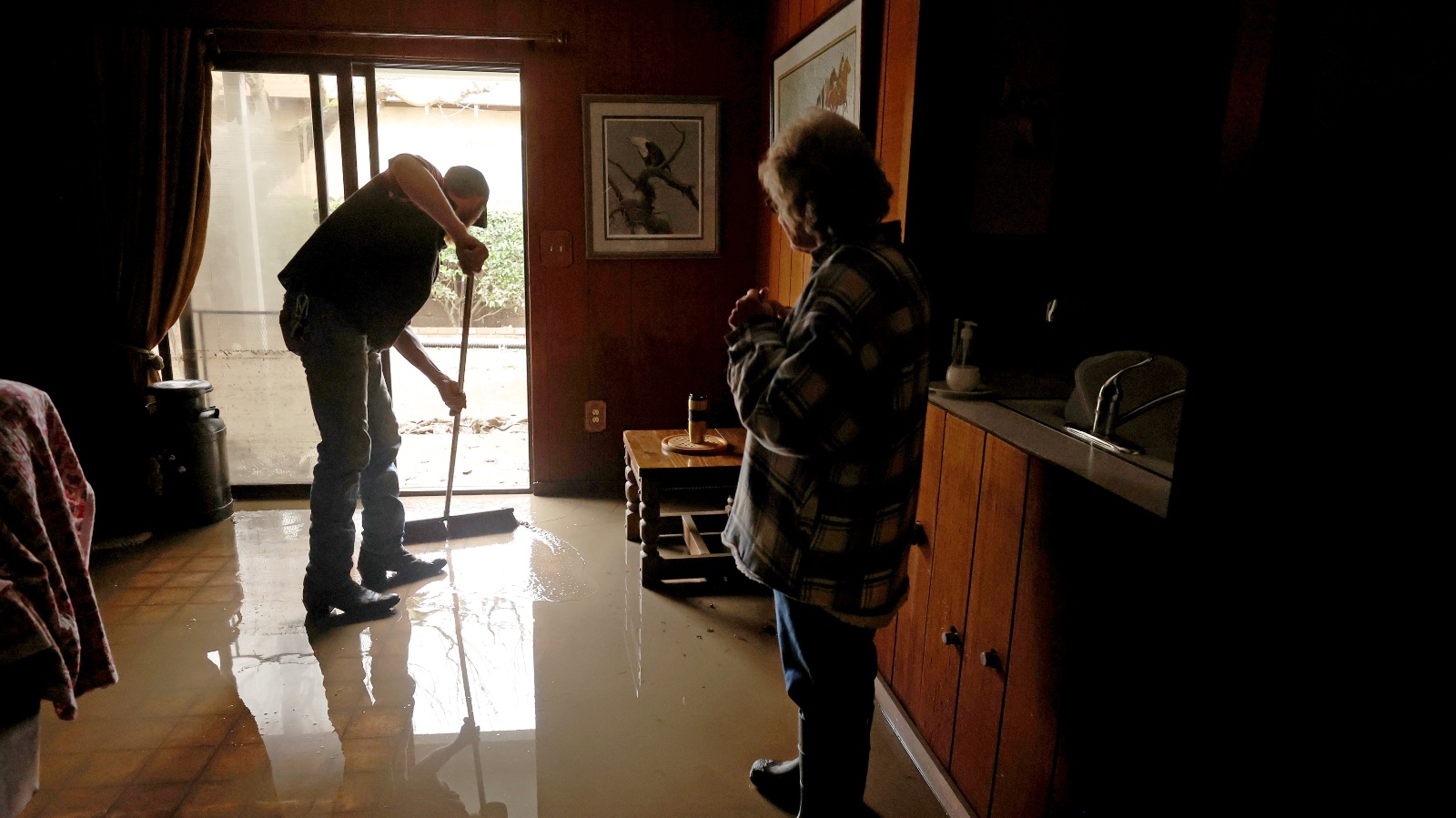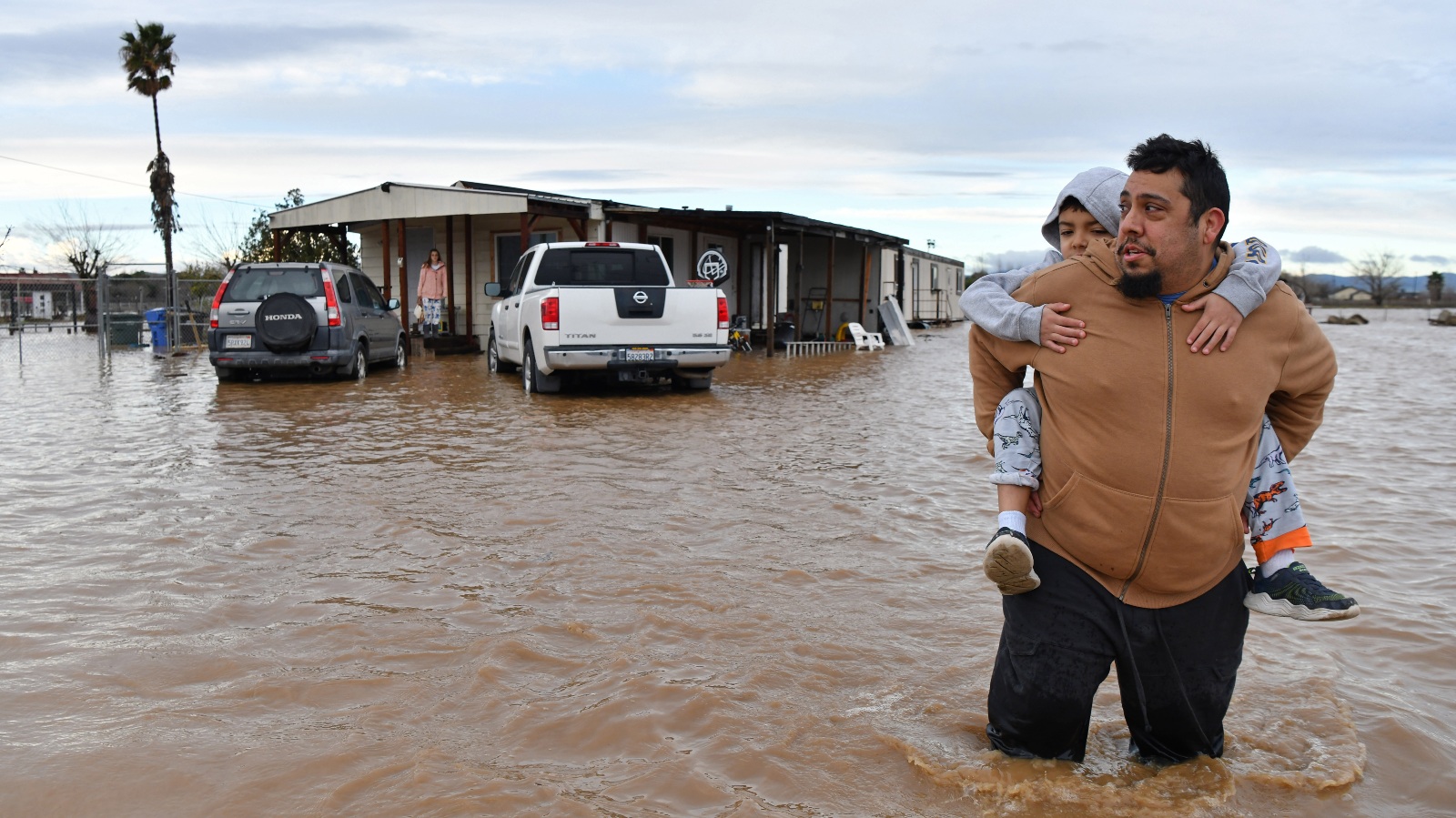California has nearly seen the last of the relentless sequence of storms that inundated the state since late December, leading to tens of thousands of evacuations, at least 20 deaths, and an estimated $1 billion in damages.
From failed levees in the Central Valley counties of Merced and Sacramento to overflowing rivers along the coast, the rains touched almost every part of the state, with many areas receiving four to six times above average precipitation for the past several weeks. Mudslides closed major roads, thousands of homes were flooded, and trees knocked out power lines, with over 13,000 electric customers yet to regain service as of Tuesday afternoon.
Meteorologists expect that by Thursday, the last storm, this time a weaker one, will have cleared from the northern and central parts of California. But in the coming weeks, as flood waters recede and the rains’ full impact comes into view, many residents may find themselves facing a second crisis: A widespread lack of flood insurance that will leave thousands of homeowners grappling with the cost of repairing and rebuilding homes.
“California is a place where the preoccupation about water is about scarcity, not abundance,” said Rebecca Elliott, a professor at the London School of Economics who wrote a book about flood insurance in the United States. “Many, many thousands of Californians will assume that they have flood coverage and find out that they don’t.”
Standard homeowners insurance does not include flood coverage, even though, according to a recent survey, 47 percent of Americans assume that it does. Just 1.33 percent of California households have standalone policies through the National Flood Insurance Program, a federal-run system that makes up 95 percent of flood coverage in the United States. The share of private flood policies in California is even smaller. Yet as of earlier this month, 90 percent of the state’s population was under flood watch.
The Federal Emergency Management Agency, or FEMA, requires homeowners with federally-underwritten mortgages to buy flood insurance if they are in what it designates as “special flood hazard areas.” That’s essentially the 100-year flood plain, or places that have a 1 percent annual chance of flooding. But the maps FEMA uses to delineate these areas are wildly out of date. First Street Foundation, a nonprofit that models flood risk, found there are 5.9 million property owners nationwide who face substantial flood risk outside FEMA’s official hazard areas.
“I show them the topography maps,” said Nick Ramirez, an insurance agent based in Los Angeles, of his clients who aren’t required by law to purchase flood insurance. “I say, ‘Do you want to protect yourself?’ Some say yes, and some just roll the dice.”

FEMA’s California maps, most of which were last updated in the 1980s and early 90s, if not before, leave out about 80 percent of the state’s rivers and streams. They also don’t account for the worsening effects of climate change, which include expanded flood risk as the climate system shifts towards hydrological extremes. Part of the reason they haven’t been updated is the expense. Communities have also often resisted expanding the flood zones to avoid costs for homeowners and restrictions on development.
Where FEMA does require mandatory insurance, the policy is underenforced. Flood insurance requirements don’t apply to mortgages that have been paid off or to properties purchased in cash. And experts say it’s common for homeowners to let their policies lapse because mortgage companies don’t check up on them. According to Elliott, the fact that lenders securitize their mortgages may be one reason for why they aren’t paying close attention. “They’re chopping up those mortgages, bundling them, and selling them on,” she said.
In recent years, the number of Californians holding flood insurance policies has been declining in line with a national pattern. Experts attribute this in large part to premium costs, and particularly to an increase in insurance rates that occurred starting October 2021 under FEMA’s new pricing methodology called Risk Rating 2.0.
The National Flood Insurance Program, or NFIP, has long struggled with debt, the result of worsening climate-fueled disasters paired with static policy premiums. With Risk Rating 2.0, FEMA re-assessed flood risk using independent models and then adjusted pricing to better reflect today’s trends. The idea, according to the agency, was to make insurance more equitable, so that people in flood zones paid more in line with their level of risk, and people outside wouldn’t have to subsidize them. (The new maps did not impact who was required to hold a policy.)
The result, however, has been a precipitous decline in policies. “We had been seeing a nationwide drop in the number of people with flood insurance [for several years],” said Nick VinZant, a senior research analyst at QuoteWizard, an online platform that allows customers to shop for and compare insurance prices. “It really started to drop as soon as FEMA put Risk Rating 2.0 in place.”
Though the state as a whole paid less under the new program than it had previously, 73 percent of California policyholders saw a price increase, in some cases as substantial as $100 a month. Between March 2021 and August 2022, 11 percent of state policyholders dropped the plan, one of the largest decreases nationwide, according to VinZant. (Nationwide, the program lost 6 percent of policyholders in the same period).

FEMA does not provide zip code-level data on policies in force, so it’s difficult to confirm that the places where premiums rose the most are the same places where people dropped the NFIP. But most experts think that’s what happened. “FEMA was very opaque. The numbers they gave were limited, so it’s hard to track,” said Nicholas Pinter, a professor and associate director of the Center for Watershed Sciences at the University of California, Davis. “There is strong suspicion that the increase in premiums has driven an exodus from the program.”
Another driver of the exodus: the multi-year mega-drought drying up rivers and reservoirs across the Western U.S. Typically, flood insurance policy enrollments increase after a flood and go down during dry years, when people forget about the potential for deluge. “Right now, my phone is ringing off the hook,” said Ramirez.
FEMA is running with the drought explanation. “There are many factors that could influence this drop in policyholders, including the economic impact of the pandemic, inflation, the housing market, affordability, or purchasing flood insurance from the private market,” David Maurstad, deputy associate administrator of resilience for FEMA, told Grist in a statement. “For California in particular, [it may be] due to the several years of drought in the area and the belief that flooding may not impact them.”
Given the increasing frequency of floods and the increasing cost of repair, Elliott believes it’s unrealistic to expect the National Flood Insurance Program to function like a private insurance company, charging enough to cover its risk and break even on its losses, while still being affordable. In California, the average cost of this insurance is $779 per year, though rates vary by region. Research by Pinter and his colleagues shows that besides a small number of waterfront communities like Malibu that have a lot of at-risk properties and high incomes, most of the state’s flood exposure is in low-income areas.
The national program tries to incentivize more flood-resilient building and planning by offering grants and lower rates to people and communities who take certain steps to protect their homes. But those investments can be costly and the agency has been criticized for not making enough support available and accessible. “We’ve been expecting [the NFIP] to underwrite the American dream of homeownership while also expecting it to signal risk, nudge people away from the water’s edge, and reduce overall exposure to flood risk,” said Elliott. “It has always had a really hard time doing all those things.” She says a better approach would be to think of insurance as just one part of the larger strategy and set of policies protecting people from floods.
On Saturday, President Biden approved California Governor Gavin Newsom’s request for a major disaster declaration in three counties, following the state’s emergency declaration for 41 of its 58 counties. Merced, Sacramento, and Santa Cruz are now eligible for grants for temporary housing and home repairs, low-cost loans to help cover uninsured property losses, and additional forms of support. More counties may be added as officials continue to assess the damage across the state.



